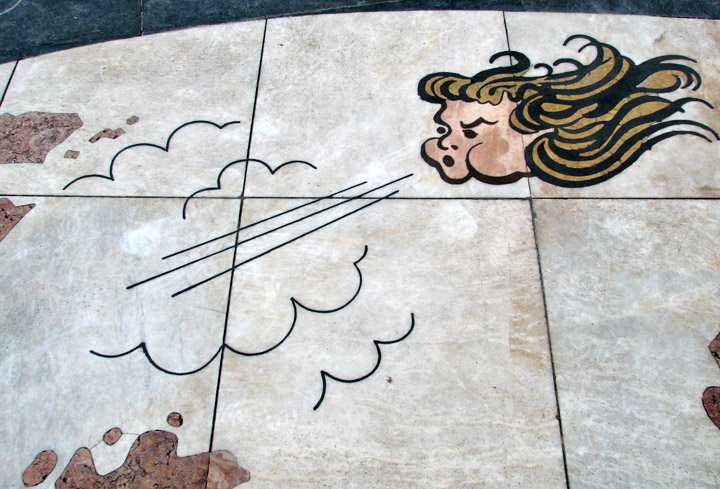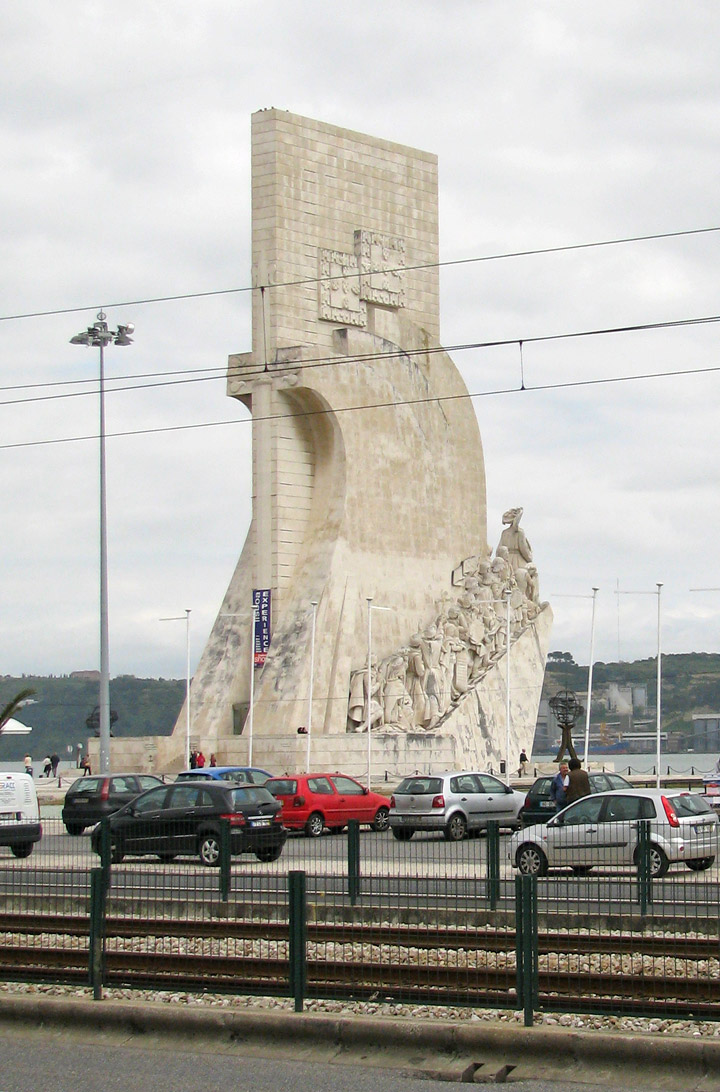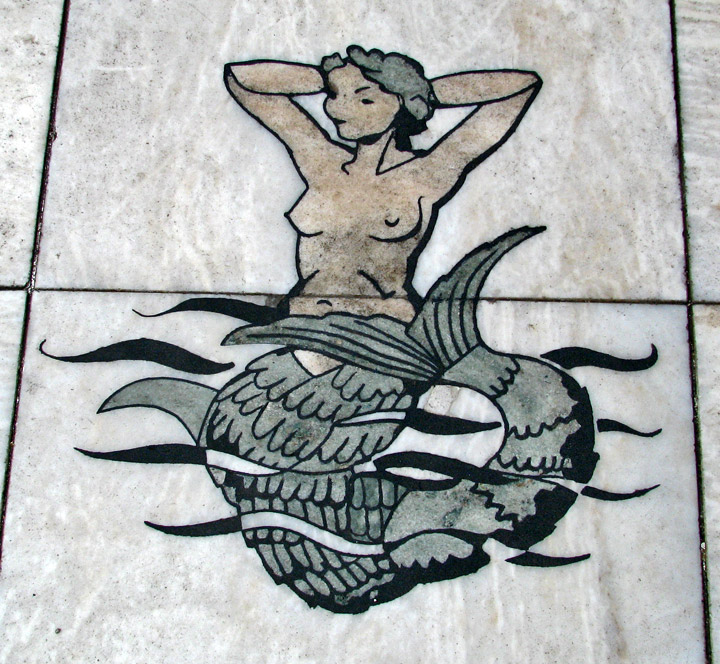

Monument to the Discoveries
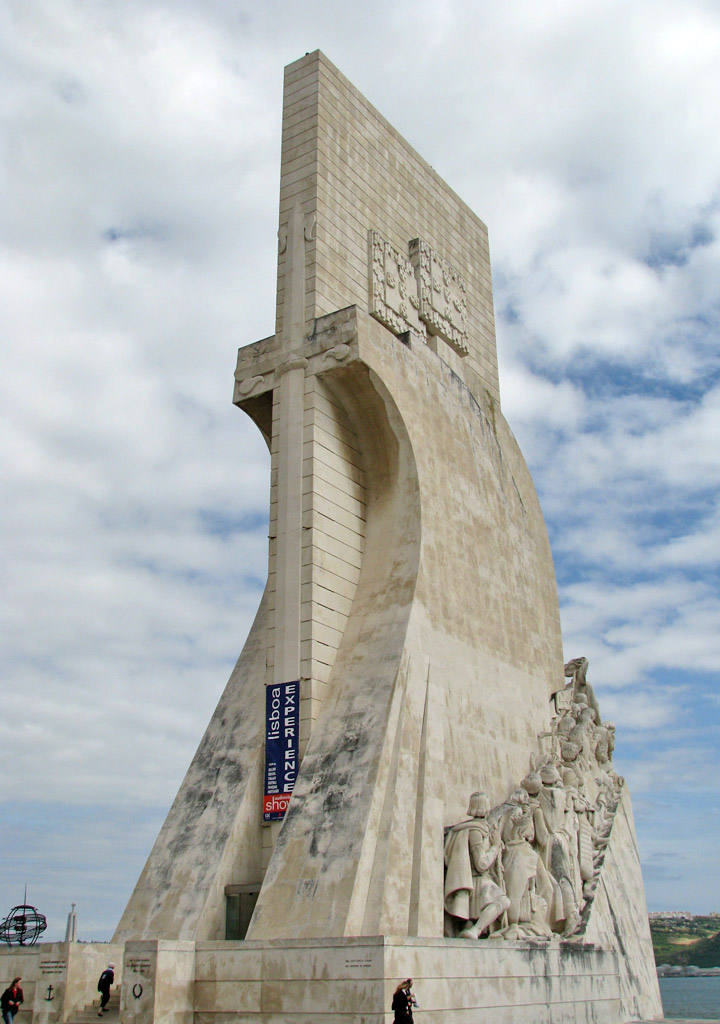
Monument to the Discoveries
Padrão dos Descobrimentos ; lit. Monument to the Discoveries) is a monument that celebrates the Portuguese who took part in the Age of Discovery of the 15th and 16th centuries. It is located on the estuary of the Tagus river in the Belém parish of Lisbon, Portugal, where ships departed to their often unknown destinations.

The monument consists of a 52 metre-high slab of concrete, carved into the shape
of the prow of a ship. The side that faces away from the river features a carved
sword stretching the full height of the monument. It was conceived by Portuguese
artists, architect Cottinelli Telmo and sculptor Leopoldo de Almeida as a
temporary beacon of the Portuguese World Fair in 1940. The Monument to the
Discoveries represents a romantic idealization of the Portuguese past that was
typical during the regime of dictator Salazar.
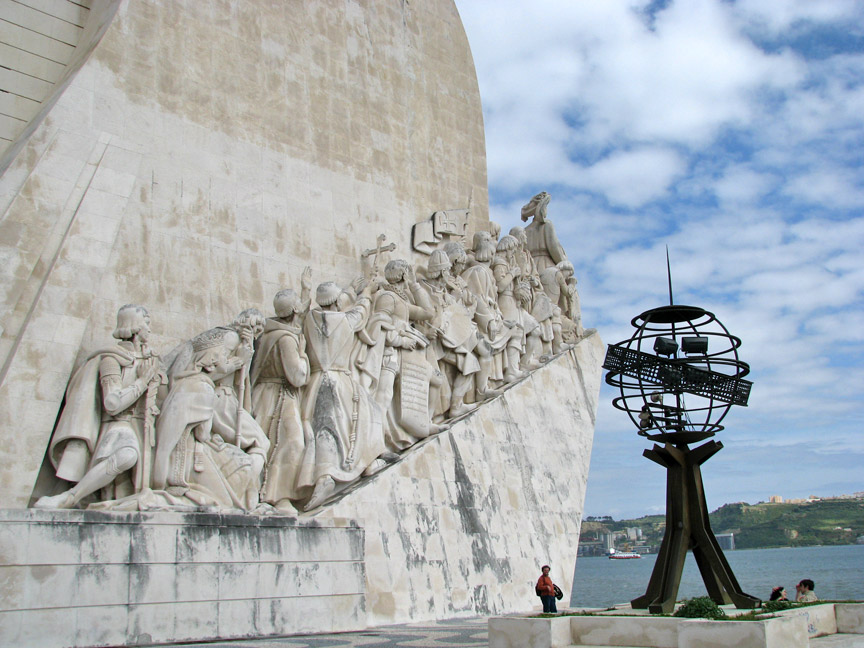
The original monument had been built with perishable materials, but it was
rebuilt in concrete in 1960, in time for the commemoration of the 500th
anniversary of the death of Henry the Navigator, the sponsor of the Portuguese
Discoveries. He is the figure at the tip of the monument, looking out over the
river. Behind Henry, on both sides of the monument, are statues of other great
people of that era, including explorers, cartographers, artists, scientists and
missionaries.
Text from Wikipedia
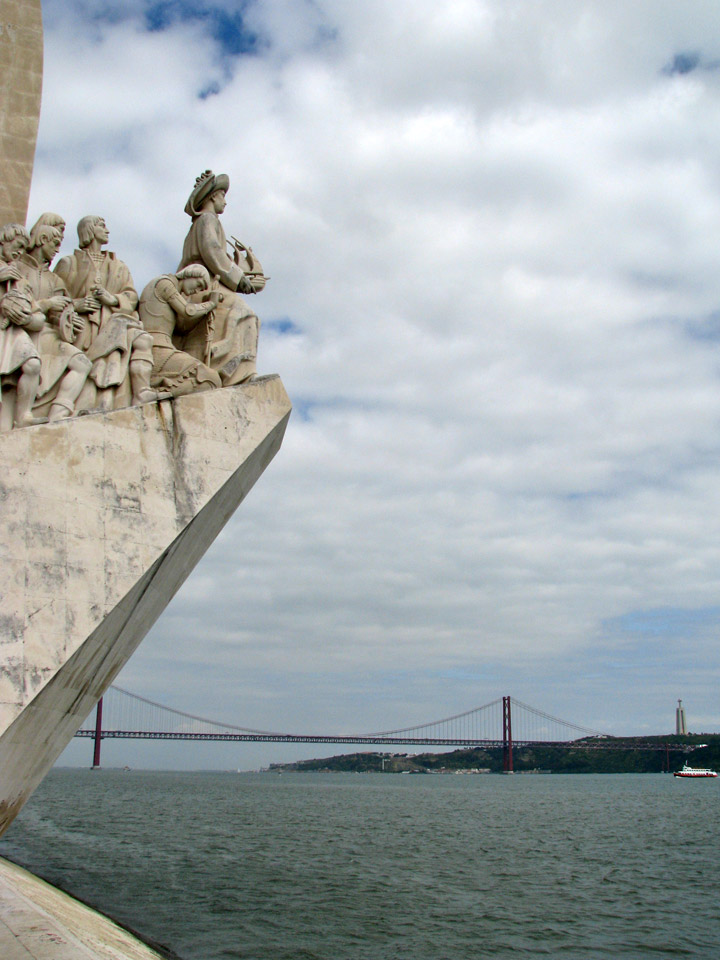
Prince Henry looking over the Tagus river
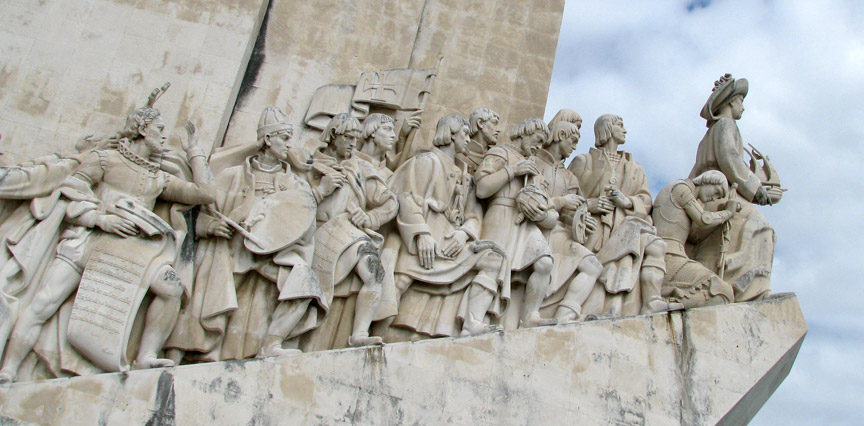
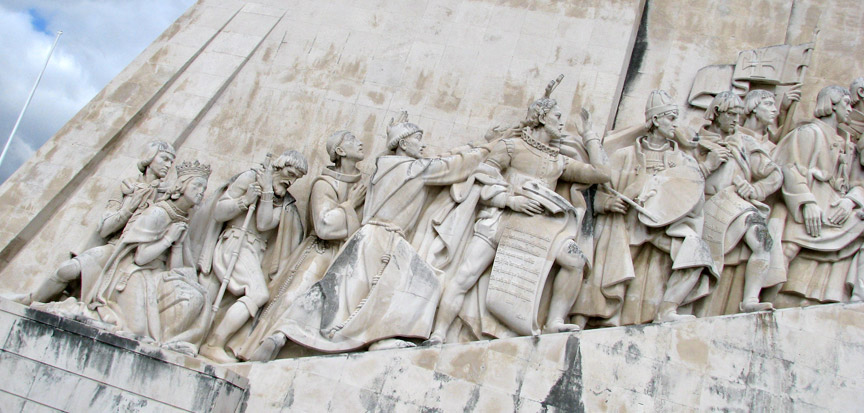
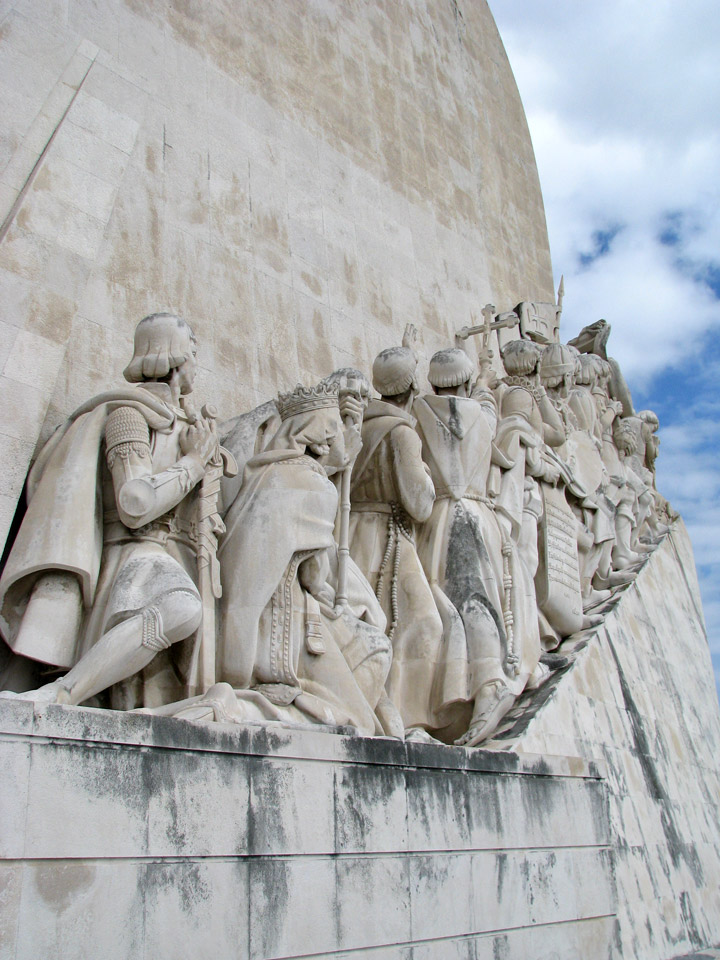
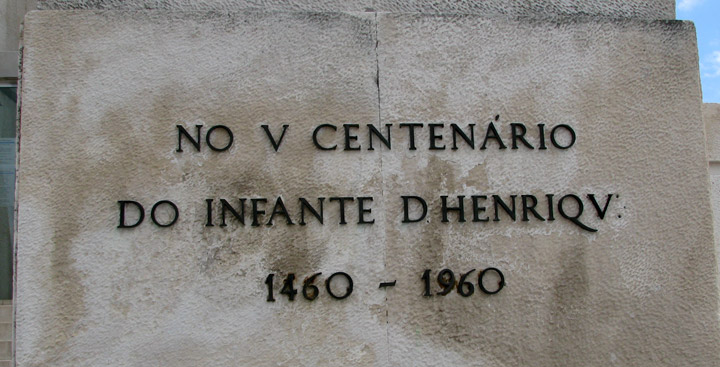
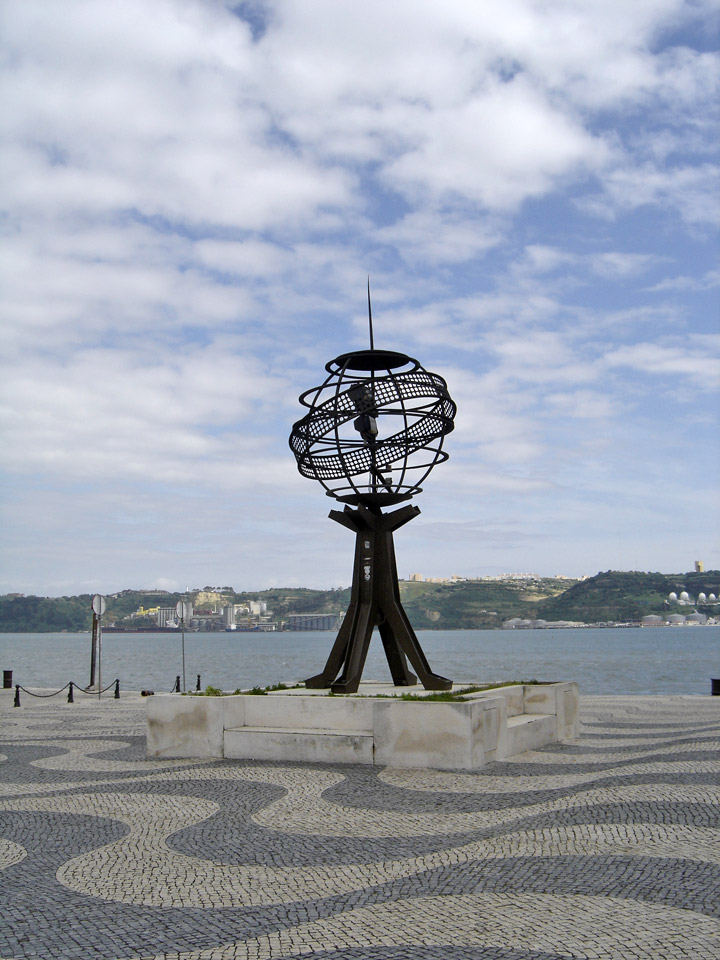
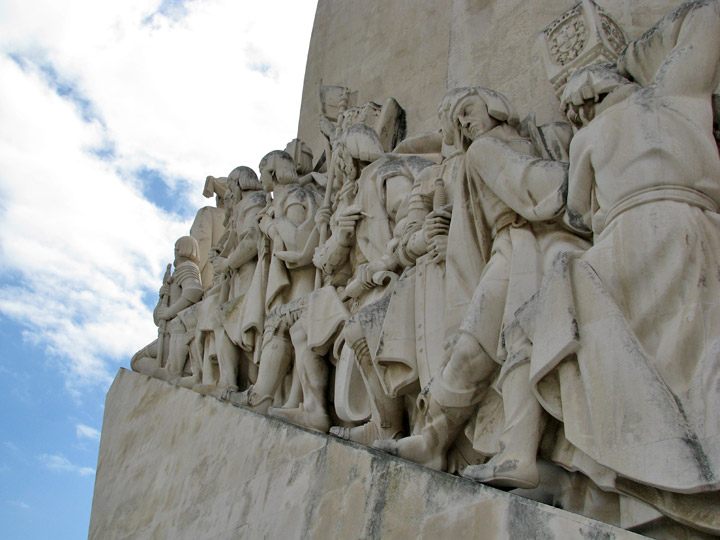
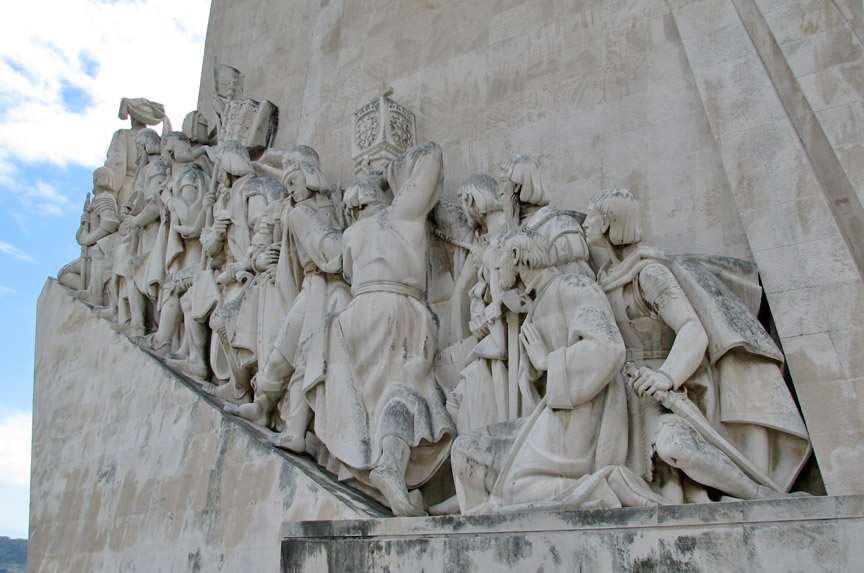
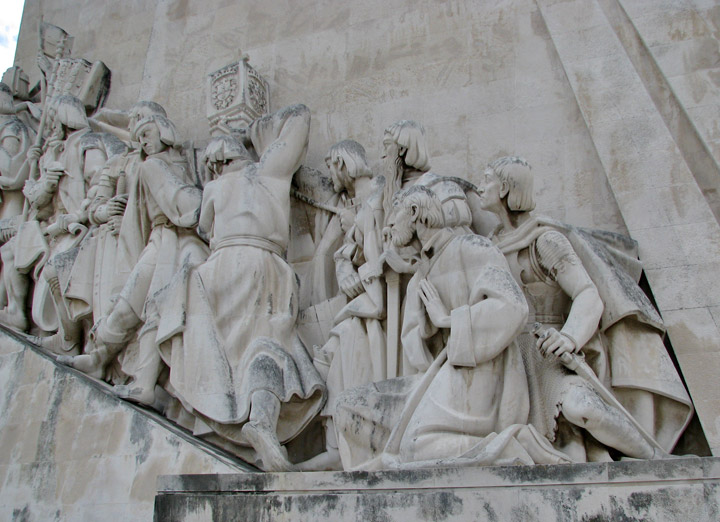
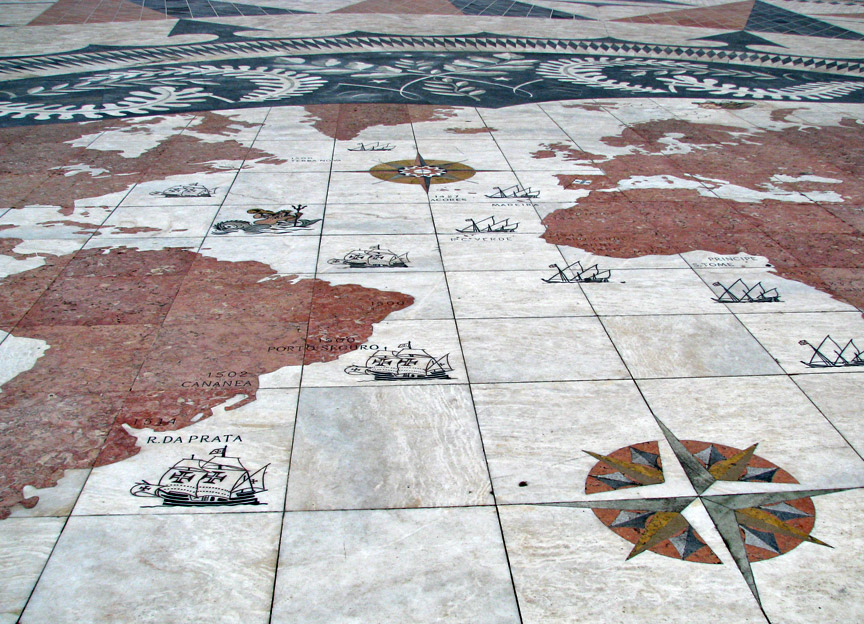
Portuguese navigations
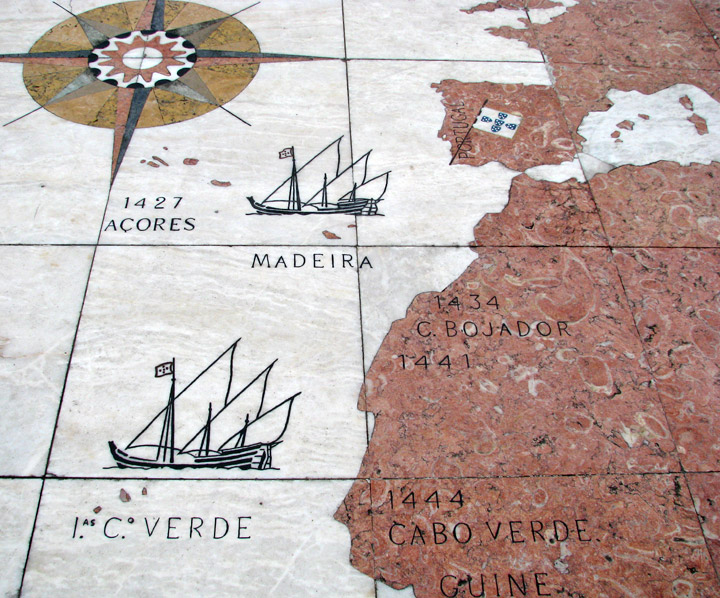
along North coast of Africa
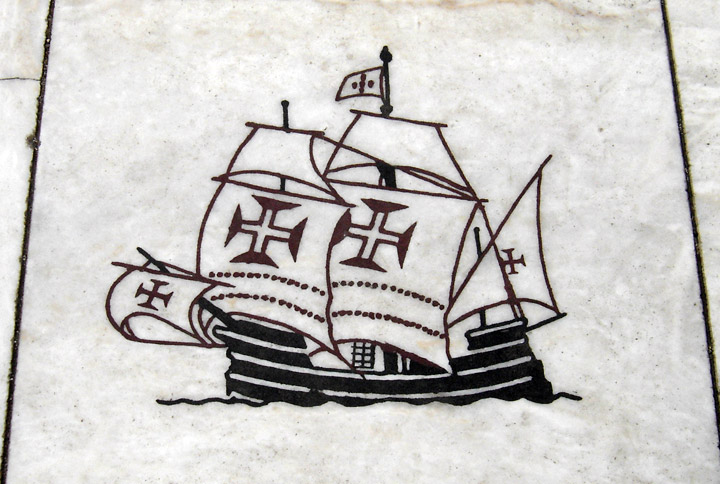
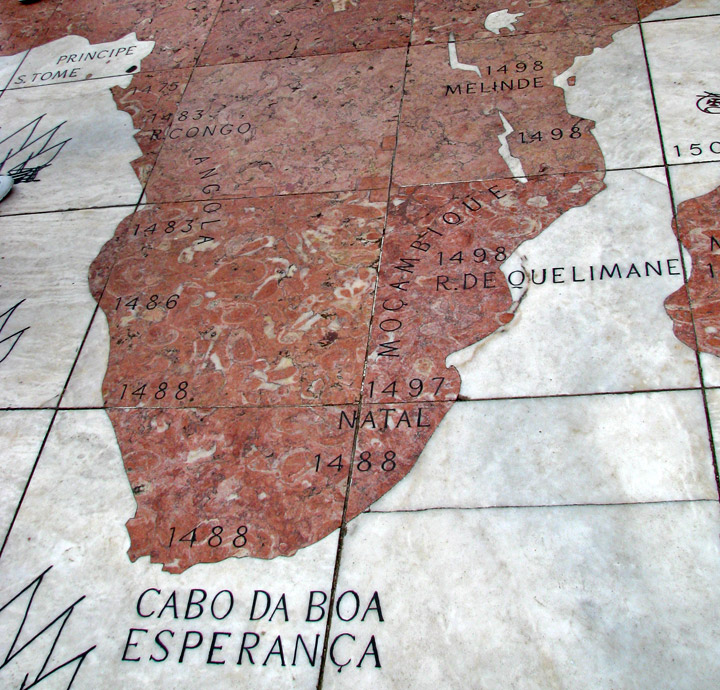
around the cape of Africa
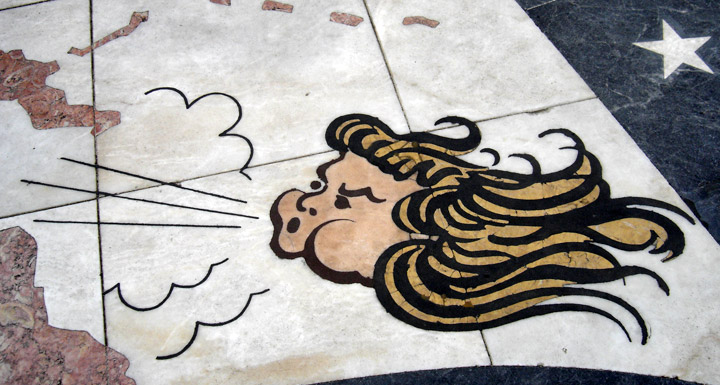
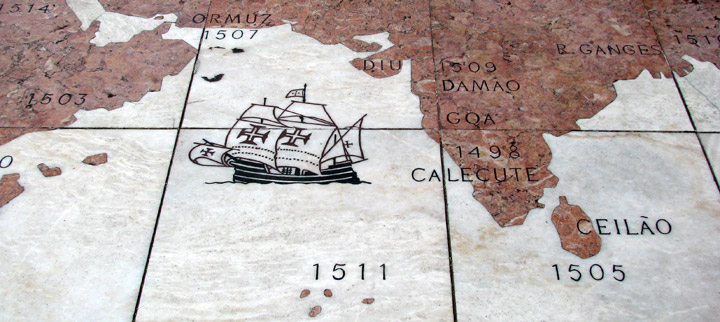
to India
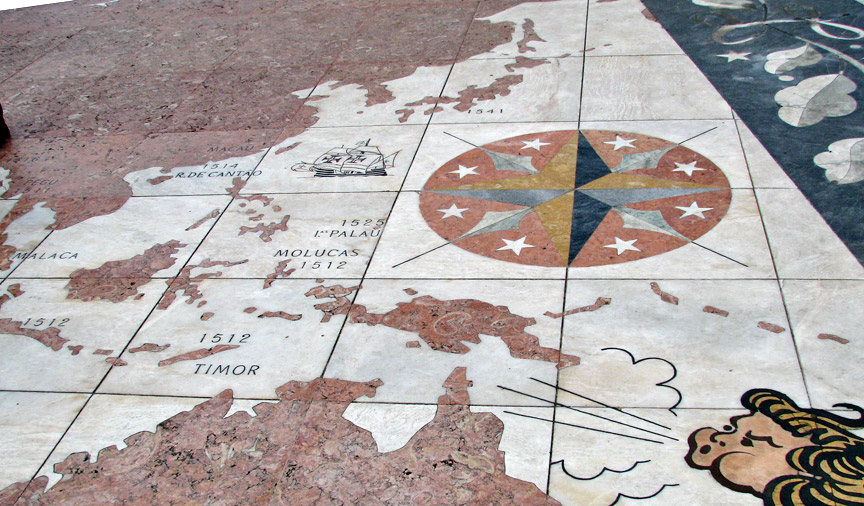
and the Far East
